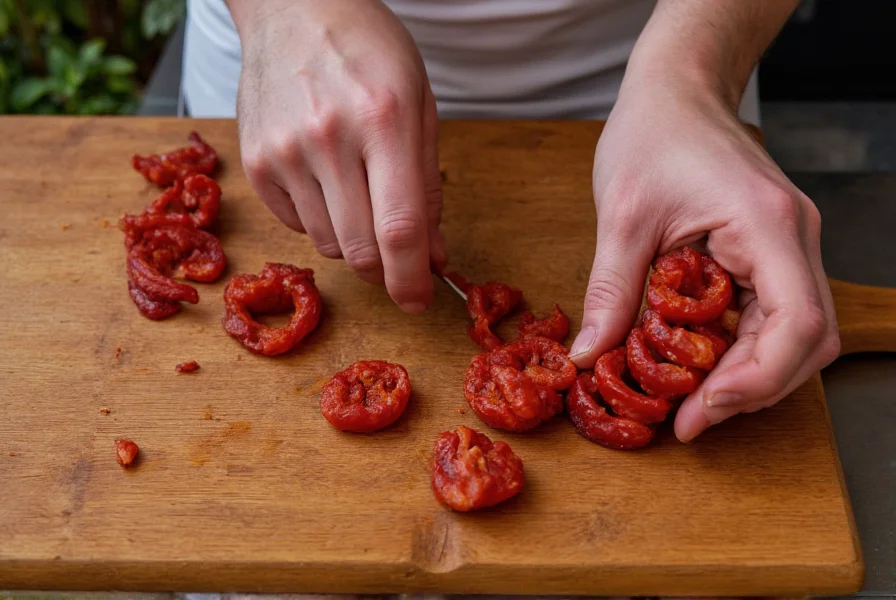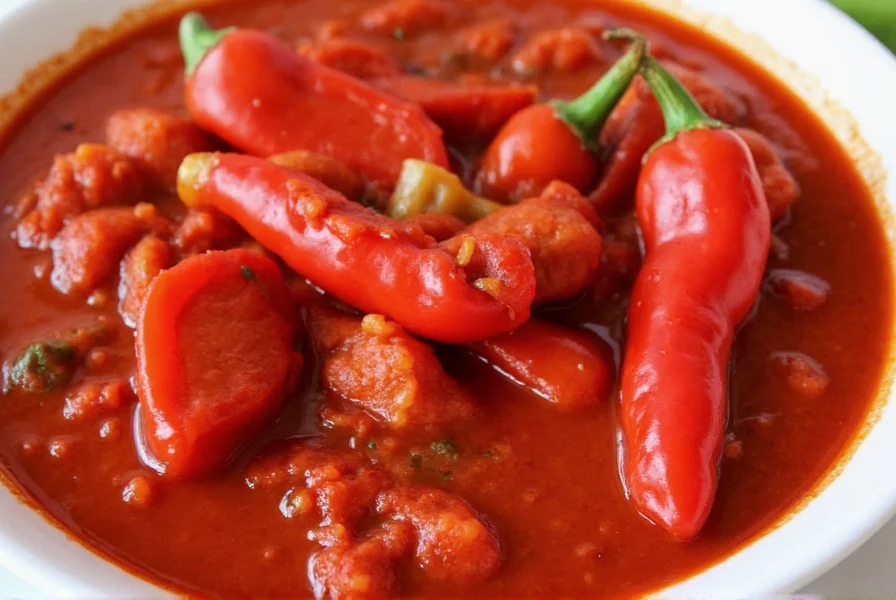Native to Italy's Calabria region, these vibrant red peppers have been cultivated for centuries in the sun-drenched hills along the Tyrrhenian coast. Calabrian chilis stand apart from other chili varieties through their distinctive flavor profile that combines moderate heat with pronounced fruity notes and subtle smokiness. Unlike the one-dimensional burn of many commercial peppers, Calabrian chilis deliver a complex sensory experience that enhances rather than overwhelms dishes.
Historical Roots and Regional Significance
Calabrian chilis arrived in Italy following Columbus's voyages to the Americas, but found their perfect home in Calabria's Mediterranean climate. The region's volcanic soil, abundant sunshine, and traditional farming methods contribute to the pepper's exceptional quality. Local farmers still harvest these peppers by hand, often drying them in the sun on rooftops—a practice documented as early as the 16th century.
Flavor Profile and Heat Characteristics
Understanding calabrian chili heat level is essential for proper culinary application. At 25,000-35,000 SHU, they sit between jalapeños (2,500-8,000 SHU) and habaneros (100,000-350,000 SHU) on the Scoville scale. What makes them special is how their heat manifests—not as an aggressive burn but as a gradual warmth that builds alongside distinct berry-like sweetness and earthy undertones.
| Chili Variety | Scoville Heat Units | Flavor Characteristics |
|---|---|---|
| Calabrian Chili | 25,000-35,000 | Fruity, smoky, moderate heat with berry notes |
| Jalapeño | 2,500-8,000 | Grassy, vegetal, mild to moderate heat |
| Habanero | 100,000-350,000 | Tropical fruit, floral, intense heat |
| Serrano | 10,000-23,000 | Sharp, bright, clean heat |
Common Forms and Culinary Applications
Chefs and home cooks utilize Calabrian chilis in several forms, each offering different culinary advantages:
- Dried whole peppers - Ideal for infusing oils or grinding into flakes
- Calabrian chili paste - The most versatile form, perfect for marinades and sauces
- Preserved in oil - Ready-to-use with enhanced flavor complexity
- Chili oil - Infused oil carrying the pepper's essence without solid particles
Traditional Calabrian dishes featuring this pepper include 'Nduja (a spicy spreadable salume), pasta con la 'nduja, and various seafood preparations. When learning how to use calabrian chili paste, start with small amounts—½ teaspoon can transform a dish without overwhelming it.

Substitution Guidance
When authentic Calabrian chilis aren't available, understanding calabrian chili substitutes becomes essential. The closest alternatives include:
- Combination of cayenne pepper (for heat) and roasted red bell pepper (for sweetness)
- Guindilla peppers with a touch of smoked paprika
- Chipotle peppers in adobo for smokiness, though these are significantly hotter
Remember that calabrian chili vs regular chili comparisons reveal significant differences—most standard grocery store chilis lack the nuanced flavor profile that makes Calabrian varieties special.
Purchasing and Storage Recommendations
Finding authentic Calabrian chilis requires attention to detail. Look for products labeled "Peperoncino Calabrese" with DOP (Protected Designation of Origin) certification when possible. High-quality where to buy calabrian chili options include:
- Specialty Italian markets
- Reputable online retailers specializing in Italian ingredients
- Farmers markets in regions with Italian culinary traditions
Proper storage extends shelf life significantly. Keep dried chilis in airtight containers away from light and moisture. Calabrian chili paste maintains quality for 6-8 months refrigerated after opening. For long-term storage, freeze paste in ice cube trays then transfer to freezer bags.

Culinary Integration Tips
Mastering traditional calabrian chili dishes requires understanding how to balance its unique properties. The pepper's moderate heat builds gradually, so add it early in cooking for infused warmth rather than late for sharp heat. When creating calabrian chili oil recipe variations, use high-quality olive oil and allow at least two weeks for flavors to meld.
Modern applications extend beyond Italian cuisine—chefs incorporate Calabrian chilis into everything from Bloody Mary mix to chocolate desserts. The key is respecting the pepper's complexity: never overpower its nuanced flavor with competing strong ingredients.
Frequently Asked Questions
Are Calabrian chilis the same as cherry peppers?
No, Calabrian chilis differ significantly from cherry peppers. Calabrian chilis are elongated, tapered peppers measuring 2-3 inches long with moderate heat (25,000-35,000 SHU), while cherry peppers are round, milder (500-2,500 SHU), and lack the distinctive smoky-fruity complexity of authentic Calabrian varieties.
Can I grow Calabrian chilis outside Italy?
Yes, Calabrian chili plants can be grown in Mediterranean-like climates with sufficient sun and warmth. They require 70-90 days to maturity and prefer well-draining soil. While the climate affects flavor intensity, gardeners in California, Texas, and southern Europe have successfully cultivated authentic-tasting Calabrian chilis outside their native region.
How does Calabrian chili compare to Aleppo pepper?
Calabrian chilis are significantly hotter (25,000-35,000 SHU) than Aleppo peppers (10,000 SHU). While both offer fruitiness, Calabrian chilis have more pronounced berry notes and smokiness, whereas Aleppo peppers feature a more wine-like acidity with moderate heat. Calabrian chilis also contain more natural oil, making them better for infusions.
Is Calabrian chili paste gluten-free?
Authentic Calabrian chili paste contains only chilis, salt, and sometimes olive oil or vinegar—making it naturally gluten-free. However, commercially prepared versions may include additives, so always check labels if gluten sensitivity is a concern. Traditional Calabrian preparation methods never incorporate gluten-containing ingredients.
What makes Calabrian chilis special compared to other Italian peppers?
Calabrian chilis stand out due to their unique terroir-driven flavor profile developed in Calabria's specific microclimate. Unlike other Italian peppers like Friulano or Senise, Calabrian varieties offer a distinctive balance of moderate heat, pronounced fruitiness, and subtle smokiness that has made them culinary treasures for centuries. The traditional sun-drying methods further enhance their complex flavor characteristics.











 浙公网安备
33010002000092号
浙公网安备
33010002000092号 浙B2-20120091-4
浙B2-20120091-4